| Share |  |
 | |||
Food Allergies - Could Dairy Be Your Problem
 An allergy or intolerance to milk and dairy products nears the top of the list of commonly experienced food allergies today. The majority of these reactions begin in infants and young children although they can be acquired later in life as well.
An allergy or intolerance to milk and dairy products nears the top of the list of commonly experienced food allergies today. The majority of these reactions begin in infants and young children although they can be acquired later in life as well.
Adverse reactions to dairy products may either be a true food allergy involving an immune system response or an intolerance that stems from the inability to digest dairy products due to an enzyme deficiency. In a true dairy allergy, undigested proteins in milk and milk products provoke allergic reactions much the same way a failure to adequately break down proteins in wheat and other gluten grains leads to gluten or wheat allergy reactions.
Symptoms of Dairy Allergies
Typical of food allergies, dairy allergies generate a wide array of symptoms that may appear in any part of the body. Symptoms may occur immediately or, in the case of delayed food allergies, may not occur until hours, or even days after a food is eaten. As with other hidden food allergies, it may not be easy to make the connection between the food and a particular symptom.
Primary symptoms linked to a dairy allergy or intolerance typically fall in one of the following four categories:
Skin – rashes, eczema, hives, canker sores, swelling of lips, tongue, face or throat
Digestive – abdominal pain, cramps or bloating, diarrhea, gas, heartburn or reflux, nausea or vomiting
Respiratory – nasal congestion, runny nose, wheezing, sneezing, coughing, recurrent ear infections or colds
Brain related/Behavorial/Other – inattentiveness (ADD, ADHD), autism, brain fog, lethargy, irritability, mood swings, night waking, migraine headaches, sore muscles and joint problems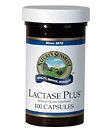
Dairy Allergy or Lactose Intolerance?
Not every symptom produced in the body from milk or milk products is a true food allergy. Though the two are often confused, what is known as “lactose intolerance” is really an enzyme deficiency rather than a true allergic reaction involving antibodies and an immune system response. Lactase is an enzyme in the gastrointestinal tract needed to break down lactose, the primary sugar in milk, so it can be absorbed into the bloodstream during the digestive process. The confusion between the two may lie in the fact that the typical symptoms of lactose intolerance (abdominal pain or cramps, bloating, gas, diarrhea or nausea) are also those commonly experienced by people with dairy allergies.
More than 70% of people worldwide are deficient in lactase. However, lactose intolerance is more common in certain ethnic and racial populations than in others. A much larger percentage (75-90%) of black Africans or Asian communities are lactose intolerant compared with as little as 5% in white Western Europeans.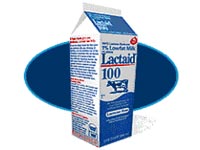 Lactose intolerance is much more common in children than adults. It seems that sometime between the ages of two and four, the production of significant amounts of lactase ceases as a normal process of maturation. Many believe this fact supports the notion that lactose containing foods, such as milk, were not meant to be consumed after the weaning period.
Lactose intolerance is much more common in children than adults. It seems that sometime between the ages of two and four, the production of significant amounts of lactase ceases as a normal process of maturation. Many believe this fact supports the notion that lactose containing foods, such as milk, were not meant to be consumed after the weaning period.
Not all forms of dairy cause the same degree of lactose intolerance. Unsweetened yogurt, sour cream, butter and certain aged cheeses (Swiss, parmesan and goat cheese) may be more easily tolerated since they contain reduced amounts of lactase. The presence of lactose in foods, however, is not limited to dairy items since this form of sugar often is used as an isolate to flavor a wide variety of processed foods.
Besides avoiding all lactose containing foods or beverages, the use of lactase enzymes and lactose-reduced dairy products is recommended for those people with lactose intolerance. For more information about lactose intolerance visit this website: http://digestive.niddk.nih.gov/ddiseases/pubs/lactoseintolerance/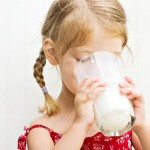 Milk Allergies in Children
Milk Allergies in Children
According to the American Academy of Allergy, Asthma and Immunology (part of the National Institute of Health), cow’s milk is the number one-cause of food allergies in children. Infants are particularly susceptible since their immune and digestive systems are immature. Approximately 2-7% of babies under a year of age are affected by this type of allergy.
In the past, children typically have outgrown dairy allergies before six years of age but the prevalence, severity and persistence of these kinds of food allergies in children seems to be increasing, according to research from Johns Hopkins Children’s Center published in Science Daily in December 2007. Dr. Robert Wood, head of Allergy & Immunology at John Hopkins Children’s Center indicates that more children today are being diagnosed with dairy (and other) food allergies and fewer are outgrowing them as early in life as they did 20 years ago.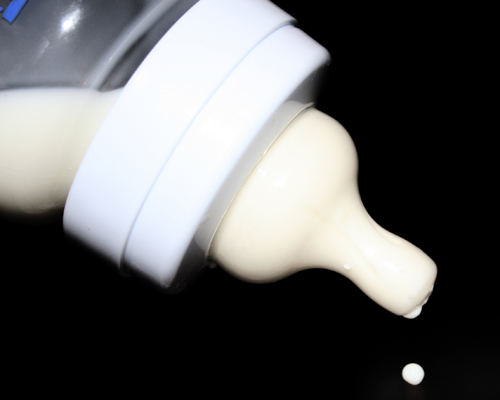 The most typical reactions of infants and young children are colic, runny noses, repeated colds or coughs, ear infections, wheezing, hives, eczema, low growth rate, blood in stools, chronic constipation, and bed-wetting. Milk is thought to trigger the production of excess mucus associated with respiratory conditions due to an immune response to the proteins of another animal. The resulting mucus flow creates many of the respiratory-type symptoms that plague so many children (as well as adults). These symptoms generally clear up after all forms of milk are removed from the diet.
The most typical reactions of infants and young children are colic, runny noses, repeated colds or coughs, ear infections, wheezing, hives, eczema, low growth rate, blood in stools, chronic constipation, and bed-wetting. Milk is thought to trigger the production of excess mucus associated with respiratory conditions due to an immune response to the proteins of another animal. The resulting mucus flow creates many of the respiratory-type symptoms that plague so many children (as well as adults). These symptoms generally clear up after all forms of milk are removed from the diet.
For the most part, breast feeding helps to avoid feeding problems related to allergic reactions in babies, which is why health experts recommend only breast milk for the first six to twelve months of life. Even with breastfeeding, an occasional baby may be so sensitive to milk proteins that a nursing mother will need to eliminate dairy from their diet in order to prevent the transfer of any allergic substance in the breast milk that may cause the baby to react.
If babies are formula fed, hypoallergenic formulas (extensively hydrolyzed or amino acid based) are available for babies with allergic reactions to cow’s milk. Lactose free formulas are available for babies who are lactose intolerant.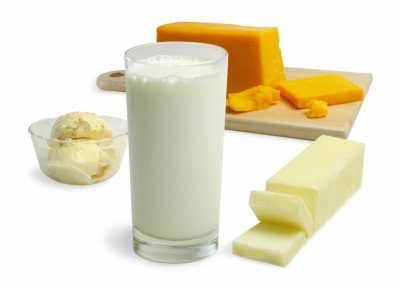 What Causes a Cow’s Milk Allergy?
What Causes a Cow’s Milk Allergy?
Cow’s milk allergies are caused by a reaction to proteins in milk; the primary of which are casein (pronounced KAY-seen) and whey. Casein is the curd that forms when milk is left to sour, while the watery part left after curd is removed is whey. Because of the glue-like properties of casein that allows foods to hold together (similar to gluten), it is used as an binding and emulsifying agent as well as for added protein and texture in numerous processed foods.
Casein accounts for 80% of the protein in cow’s milk and is the most difficult-to-digest. Cow's milk has 20 times the casein as human milk, which makes the protein in it quite difficult for people to assimilate effectively. When protein cannot be broken down, the immune system is weakened and allergies can more easily occur.
Processes used in the treatment of milk, particularly pasteurization, alter proteins in milk, which makes them even harder to digest (see companion article for more about how milk is altered through modern processing). People with poor digestive health and leaky gut syndrome are far more susceptible to developing allergies to proteins such as casein and gluten. For more information on why some people have more difficulty than others in digesting these proteins, I would refer you to my article “Food Allergies – Could They Be Your Problem – Part Two.”
Going “Dairy Free”
Generally speaking, a person with a true dairy allergy must avoid all forms of dairy. Sometimes, however, those who just cannot tolerate milk because of the indigestibility of the milk proteins may not experience the same problem with cultured milk products. Cultured milk products like yogurt or kefir are fermented by adding beneficial bacteria, which breaks down hard-to-digest proteins.
For those needing to avoid all forms of dairy, it is important to understand that doing so involves more than the obvious dairy products since derivatives of dairy are included in numerous processed foods and even non-food items. Casein derivatives are found in spreads, margarine, dressings and countless other processed food products contained in boxes, bags, or packages. Listed below are just some of the names for casein you may see on a food item label:
- Caseinate (ammonium, potassium, sodium, calcium, magnesium, zinc and iron caseinates)
- Casein Hydrolysate
- Curd
- Fortified Proteins
- Milk Protein, Solids, or Powder
- Paracasein
- Rennet Casein
It is essential to familiarize yourself with the names of possible dairy ingredients and actually read the ingredient label of a product to know what foods or items to avoid (an exception would be foods that say “Parve” on the package found in the kosher section of the grocery store, which contain no dairy). A product may say “non dairy” on the front, such as whipped topping and creamer, but that actually only means it contains less than 0.5% milk by weight.
Until you are more familiar with the many different names that indicate the presence of dairy, it is a good idea to take a list of foods to avoid with you to the grocery store. Of course, buying basic ingredients and preparing foods yourself is the safest way to avoid hidden dairy since it is generally processed foods that contain the different dairy isolates.
In addition to foods items, some form of casein may also be found in non-food items such as:
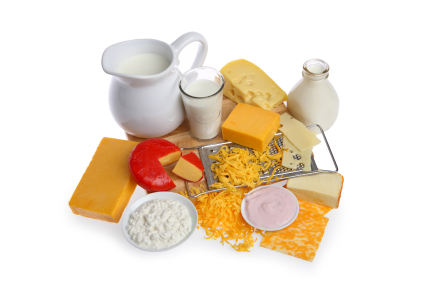 Extenders/tenderizers
Extenders/tenderizers- Nutritional fortifiers
- Texturizers
- Chewing gum
- Adhesives
- Cosmetics & other personal care products
- Nutritional supplements
- Pharmaceuticals
For a list of products that contain no milk, lactose, whey, casein, butter, cream, cheese or other milk derivatives, you may want to check out www.milkfreepantry.com (keep in mind that not every product listed on this website has completely healthy ingredients but it can give you some ideas of what is available to get you started).
Detecting Dairy Sensitivities
If you suspect a dairy allergy or lactose intolerance in you or your child, try eliminating all forms of dairy and any casein, whey or lactose containing foods (watch for non-food items as well) for a period of weeks (Dr. David Brownstein, author of “The Guide to a Dairy-Free Diet” recommends a six week trial though some sources indicate two to three weeks may be sufficient).
Then re-introduce a dairy food such as milk for one day and watch for reactions. Stick with a basic version of dairy without any added ingredients (i.e. plain yogurt versus one with lots of sugar and fruit). Go back to eating dairy free for several more days to allow for a possible delayed reaction. If there is no reaction, introduce another type of dairy food and repeat the same process, continuing to watch for any symptoms. Obviously, any symptoms would indicate a possible dairy allergy. If you continue with no reaction to the main forms of dairy, you may want to experiment with non-dairy foods that contain the protein casein such as vegetarian cheese. For more information on conducting elimination diets, see my article “Food Allergies – Could They Be Your Problem – Part 2.”
Blood tests can determine if antibodies against casein are producing symptoms. Dr. David Brownstein reported in his book that 70% of the people in his medical practice produced antibodies against casein when tested for casein sensitivity over the course of a 10-year period of time. Clear laboratory signs of an allergy to casein were discovered in half of the adults tested.
Traditional skin tests may pick up some forms of dairy allergies (more immediate onset than delayed onset allergies), but blood tests (RAST, ELISA or ALCAT are the most recommended) and the Elimination-Challenge test are more accurate. Lactose intolerance may be determined by a blood glucose test, hydrogen breath test or stool acidity test.
Addictive Cravings and Dairy Allergies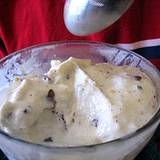
An unusual phenomenon associated with food allergies is that food sensitivities sometimes cause people to crave the very foods to which they are allergic. When people have an enzyme deficiency, leaky gut or other gastrointestinal issue that interferes with proper digestion and assimilation of food, undigested casein peptides (casomorphin) can enter the bloodstream via openings in the intestinal wall. Theory has it that these undigested peptides travel through the bloodstream to the brain where they attach to opiate receptors.
Eating a food allergen like dairy can then create an “endorphin-like” effect similar to that of drugs or alcohol (endorphins are peptide hormones that bind to opiate receptors), which may be addictive in some people and contribute to eating disorders. Since such an effect makes the person feel good when they eat the food allergen, the tendency is to crave more of that food when the temporary feeling wears off. If a person tries to quit eating that food, they can even suffer withdrawal symptoms. 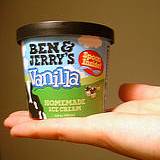
Many times people who eat compulsively and have weight problems do not realize that those food cravings stem from an attempt to stop withdrawal symptoms brought on by an actual physiological need of their body associated with a food sensitivity. This phenomenon is sometimes referred to as the “allergy addiction cycle.”
If you find that you are particularly “addicted” to a dairy food, such as cheese or ice cream and would not be able to give it up easily, it may indicate a dairy allergy or intolerance. People who struggle with not being able to lose weight have been known to drop pounds when they remove gluten or casein from their diet. One way to find out for sure if you do or do not have a dairy allergy is to eliminate all forms of dairy and see if you experience severe cravings or if you are able to lose weight more easily.
Life Isn’t Over! – Dairy Alternatives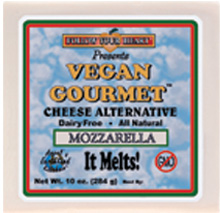
Just because you eliminate dairy from your diet does not mean you can no longer enjoy having cereal, ice cream, creamed soups, baked goods or any number of other popular foods that often contain milk or milk products. Non-dairy “milk” options are available such as almond milk (my favorite), rice milk, coconut milk, hemp milk, cashew milk and other vegan milk substitutes. (I would not recommend most soy milk or soy milk products produced in this country as they are typically made from genetically modified soybeans. For more about the health implications associated with many soy products, I would recommend that you check out this web page: http://www.westonaprice.org/soy-alert.html) and/or read the book “The Whole Soy Story” by Kaayla Daniel or go to her website - www.thewholesoystory.com).
Non-dairy “milks” are often fortified with vitamin D, calcium and other nutrients to compete with the nutrients added to regular milk. Since they are plant-based, there is no concern with trans fats, cholesterol, or saturated fats (with the exception of coconut milk) “Unsweetened or “light” varieties of non-dairy milks are available, which typically have just 0-4 grams of sugar per eight ounce glass (as opposed to cow’s milk, which has 12-16 grams of sugar per eight ounce serving, regardless of whether it is whole milk or skim milk). Any of these “milks” can be used as a substitute for cow’s milk in recipes in the same proportions. Non-dairy ice creams made from coconut, rice and other “milks” are available as well as countless other dairy free substitutes.
For many wonderful ideas, helpful hints and delicious recipes for dairy free living, I would recommend Alisa Marie Fleming’s book “Go Dairy Free – the Guide and Cookbook for Milk Allergies, Lactose Intolerance, and Casein-Free Living.” It is a wealth of information and a great resource for anyone who needs to know more about this subject. You may learn more and access information and recipes as well by visiting her website at HYPERLINK "http://www.godairyfree.org" www.godairyfree.org. In addition, Dr. Brownstein’s book “The Guide to a Dairy-Free Diet” contains much valuable information, great tips and very healthy recipe ideas for dairy free living as well.
Concluding Thoughts
Giving up popular foods you love can be challenging but being free of the symptoms of allergic reactions or the struggle to lose weight can be well worth the sacrifice. Plus many find that by keeping particular foods out of their diet for a period of time, their body rebuilds a tolerance for that food in time to the point where it can be reintroduced months later without causing the same reaction. If you at all suspect that any symptoms you or your child experience could be related to dairy, you have nothing to lose by eliminating dairy products for a couple of weeks to see if you notice improvements. It just may provide answers that will make a difference in your quality of life.
FOOD ALLERGY SERIES - SPECIAL CONCLUDING NOTE:
Since this is the last article of this series on food allergies, I wanted to take the opportunity to pass on some information to those of you with serious allergy issues in your own life or that of a loved one, in hopes it would prove helpful to those led to pursue it. My knowledge of this revolutionary approach to allergy elimination is very limited, though I do personally know individuals who have successfully been treated using this technique, and no longer have any symptoms of their previous food allergy.
While the traditional approach to treating food allergies is avoiding the food or substances that trigger allergic reactions as discussed in these articles, I wanted to at least make you aware of a very different alterative approach that works to completely and permanently eliminate the allergy. People who receive successful treatment with this method are able to eat the previous food allergen without it causing any reaction in the body whatsoever.
The method of desensitizing a person to the allergic substance is known as Nambudripad’s Allergy Elimination Technique (NAET® for short). Dr. Nambudripad, founder of NAET®, has helped thousands of people with multiple health problems detect and reverse their allergies using NAET® techniques. She has trained over 9,000 practitioners all over the world so that people who suffer from allergies can find help in their local area.
NAET® utilizes a combination of healing and assessment modalities (kinesiology, acupuncture/acupressure, nutritional management and a specific type of spinal manipulative procedure) to desensitize the individual to the allergen and, subsequently, eliminate the allergy. If you are interested in learning more about this alternative approach, you can check out the website www.naet.com or order the book “NAET: Say Good-bye to Your Allergies” by Devi S. Nambudripad, M.D., D.C., L.Ac., PhD. (Acu.)
Dr. Ellen Cutler, author of “The Food Allergy Cure” has a similar approach and method called Bioset®. You can learn more about her allergy elimination program by visiting her website: http://www.drellencutler.com/
Sources:
- The Guide to a Dairy-Free Diet by David Brownstein, M.D. and Sheryl Shenefelt, C.N.
- Go Dairy Free by Alisa Marie Fleming
- http://www.westonaprice.org
- http://www.springboard4health.com/notebook/health_food_addiction.html
- http://www.foodallergysolutions.com/food-allergy-news0307.html
- http://www.theallergysite.co.uk/dairy.html
- http://www.wisegeek.com/what-is-casein.htm
- http://www.allergicchild.com/milk_allergy.htm
- http://www.whfoods.com/genpage.php?tname=george&dbid=66
- http://food-facts.suite101.com/article.cfm/consume_raw_milk_or_almond_milk#ixzz0pX6ZbTaZ
Copyright © 2008-2015 Lucinda Bedogne, CNHP, CNC
Reader Comments...
| 2011-03-02 14:46:39 "In your six-week plan to eliminate dairy products, can there be withdrawal symptoms? What kind, and for how long? Severe? (Web site?) Can a dairy allergy greatly increase the spasticity of Cerebral Palsy? Thank you immensely." - Richard |
Post Your Comment...
|
|
||||||||||||



